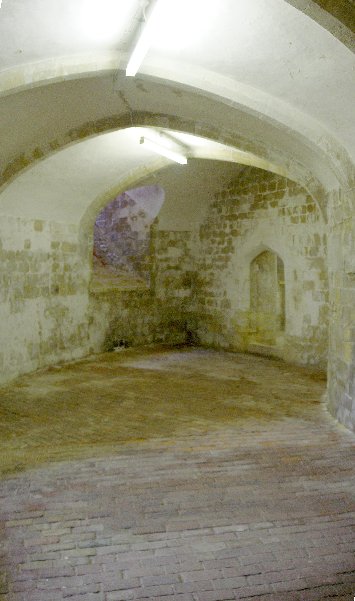
Walmer Castle
Built in the 1530s along with Deal and Sandown Castles to protect the open beaches between the Cliffs of Dover and the mouth of the Thames, Walmer has been much changed over time, being perhaps best known as a residence of the Duke of Wellington after the Napoleonic Wars when he was Lord Warden of the Cinque Ports. The Duke died in the castle, and now a great of Wellington paraphernalia is on display there.

Here you can see the multi-level nature of the fort. Guns could not only be mounted atop the circular bastions, but also pointing out from inside the interior through prominent gunports. Nearer the bottom of the ditch are numerous small arms gunports. Above the bastion you can see the crenellated top of the keep, which has been heavily modified, and to the right you can see the entrance.

Entrance
The ditch is more obvious in this panorama. The circular bastion in the center is the same one in the previous picture. Unlike Deal Castle's gatehouse, Walmer's has not been reduced in height.

Closer in you can see the murder holes above the entrance. The windows above must be part of the later modifications.

In this panorama, you can see that to provide a better defense the outer circular bastions were separated from the keep, which is higher than the outer bastions. The area with shuttered windows and crenellations appears to be a later addition to make the fort into a more comfortable residence.

The North Sea on the right was much closer to the castle when the fort was built as it was intended to help repulse invasions.

Like Deal Castle, the basement was used for storage.